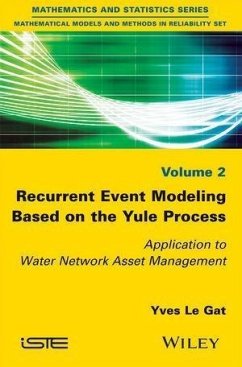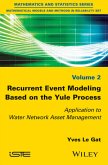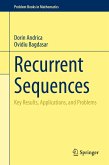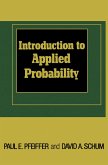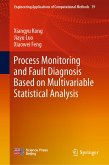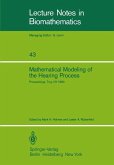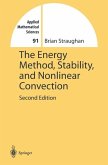Yves Le Gat
Recurrent Event Modeling Based on the Yule Process (eBook, PDF)
Application to Water Network Asset Management
139,99 €
139,99 €
inkl. MwSt.
Sofort per Download lieferbar

0 °P sammeln
139,99 €
Als Download kaufen

139,99 €
inkl. MwSt.
Sofort per Download lieferbar

0 °P sammeln
Jetzt verschenken
Alle Infos zum eBook verschenken
139,99 €
inkl. MwSt.
Sofort per Download lieferbar
Alle Infos zum eBook verschenken

0 °P sammeln
Yves Le Gat
Recurrent Event Modeling Based on the Yule Process (eBook, PDF)
Application to Water Network Asset Management
- Format: PDF
- Merkliste
- Auf die Merkliste
- Bewerten Bewerten
- Teilen
- Produkt teilen
- Produkterinnerung
- Produkterinnerung

Bitte loggen Sie sich zunächst in Ihr Kundenkonto ein oder registrieren Sie sich bei
bücher.de, um das eBook-Abo tolino select nutzen zu können.
Hier können Sie sich einloggen
Hier können Sie sich einloggen
Sie sind bereits eingeloggt. Klicken Sie auf 2. tolino select Abo, um fortzufahren.

Bitte loggen Sie sich zunächst in Ihr Kundenkonto ein oder registrieren Sie sich bei bücher.de, um das eBook-Abo tolino select nutzen zu können.
This book presents research work into the reliability of drinking water pipes.
The infrastructure of water pipes is susceptible to routine failures, namely leakage or breakage, which occur in an aggregative manner in pipeline networks. Creating strategies for infrastructure asset management requires accurate modeling tools and first-hand experience of what repeated failures can mean in terms of socio-economic and environmental consequences.
Devoted to the counting process framework when dealing with this issue, the author presents preliminary basic concepts, particularly the process…mehr
- Geräte: PC
- mit Kopierschutz
- eBook Hilfe
- Größe: 1.57MB
Andere Kunden interessierten sich auch für
![Recurrent Event Modeling Based on the Yule Process (eBook, ePUB) Recurrent Event Modeling Based on the Yule Process (eBook, ePUB)]() Yves Le GatRecurrent Event Modeling Based on the Yule Process (eBook, ePUB)139,99 €
Yves Le GatRecurrent Event Modeling Based on the Yule Process (eBook, ePUB)139,99 €![Recurrent Sequences (eBook, PDF) Recurrent Sequences (eBook, PDF)]() Dorin AndricaRecurrent Sequences (eBook, PDF)44,95 €
Dorin AndricaRecurrent Sequences (eBook, PDF)44,95 €![Introduction to Applied Probability (eBook, PDF) Introduction to Applied Probability (eBook, PDF)]() Paul E. PfeifferIntroduction to Applied Probability (eBook, PDF)40,95 €
Paul E. PfeifferIntroduction to Applied Probability (eBook, PDF)40,95 €![Process Monitoring and Fault Diagnosis Based on Multivariable Statistical Analysis (eBook, PDF) Process Monitoring and Fault Diagnosis Based on Multivariable Statistical Analysis (eBook, PDF)]() Xiangyu KongProcess Monitoring and Fault Diagnosis Based on Multivariable Statistical Analysis (eBook, PDF)105,95 €
Xiangyu KongProcess Monitoring and Fault Diagnosis Based on Multivariable Statistical Analysis (eBook, PDF)105,95 €![Crucial Event Rehabilitation Therapy (eBook, PDF) Crucial Event Rehabilitation Therapy (eBook, PDF)]() Bruce J. WestCrucial Event Rehabilitation Therapy (eBook, PDF)36,95 €
Bruce J. WestCrucial Event Rehabilitation Therapy (eBook, PDF)36,95 €![Mathematical Modeling of the Hearing Process (eBook, PDF) Mathematical Modeling of the Hearing Process (eBook, PDF)]() Mathematical Modeling of the Hearing Process (eBook, PDF)40,95 €
Mathematical Modeling of the Hearing Process (eBook, PDF)40,95 €![The Energy Method, Stability, and Nonlinear Convection (eBook, PDF) The Energy Method, Stability, and Nonlinear Convection (eBook, PDF)]() Brian StraughanThe Energy Method, Stability, and Nonlinear Convection (eBook, PDF)73,95 €
Brian StraughanThe Energy Method, Stability, and Nonlinear Convection (eBook, PDF)73,95 €-
-
-
This book presents research work into the reliability of drinking water pipes.
The infrastructure of water pipes is susceptible to routine failures, namely leakage or breakage, which occur in an aggregative manner in pipeline networks. Creating strategies for infrastructure asset management requires accurate modeling tools and first-hand experience of what repeated failures can mean in terms of socio-economic and environmental consequences.
Devoted to the counting process framework when dealing with this issue, the author presents preliminary basic concepts, particularly the process intensity, as well as basic tools (classical distributions and processes).
The introductory material precedes the discussion of several constructs, namely the non-homogeneous birth process, and further as a special case, the linearly extended Yule process (LEYP), and its adaptation to account for selective survival. The practical usefulness of the theoretical results is illustrated with actual water pipe failure data.
The infrastructure of water pipes is susceptible to routine failures, namely leakage or breakage, which occur in an aggregative manner in pipeline networks. Creating strategies for infrastructure asset management requires accurate modeling tools and first-hand experience of what repeated failures can mean in terms of socio-economic and environmental consequences.
Devoted to the counting process framework when dealing with this issue, the author presents preliminary basic concepts, particularly the process intensity, as well as basic tools (classical distributions and processes).
The introductory material precedes the discussion of several constructs, namely the non-homogeneous birth process, and further as a special case, the linearly extended Yule process (LEYP), and its adaptation to account for selective survival. The practical usefulness of the theoretical results is illustrated with actual water pipe failure data.
Dieser Download kann aus rechtlichen Gründen nur mit Rechnungsadresse in D ausgeliefert werden.
Produktdetails
- Produktdetails
- Verlag: Wiley-ISTE
- Erscheinungstermin: 14. Dezember 2015
- Englisch
- ISBN-13: 9781119261308
- Artikelnr.: 44418777
- Verlag: Wiley-ISTE
- Erscheinungstermin: 14. Dezember 2015
- Englisch
- ISBN-13: 9781119261308
- Artikelnr.: 44418777
- Herstellerkennzeichnung Die Herstellerinformationen sind derzeit nicht verfügbar.
Yves Le Gat is a Civil Engineer and Researcher at the National Research Institute of Science and Technology for Environment and Agriculture (IRSTEA), a French governmental institution under the joint supervision of the French ministries in charge of research and agriculture.
Preface ix Chapter 1. Introduction 1 1.1. Notation 2 1.2. General theoretical framework 4 1.2.1. The concept of a counting process 4 1.2.2. The intensity function of a counting process 5 1.3. The non-homogeneous Poisson process 6 1.4. The Eisenbeis model 7 1.5. Other approaches for water pipe failure modeling 8 1.6. Why mobilize the Yule process? 9 1.7. Structure of the book 10 Chapter 2. Preliminaries 13 2.1. The Yule process and the negative binomial distribution 13 2.2. Gamma-mixture of NHPP 17 2.3. The negative binomial power series 19 2.4. The negative multinomial distribution 19 2.5. The negative multinomial power series 22 Chapter 3. Non-homogeneous Birth Process 23 3.1. NHBP intensity 24 3.2. Conditional distribution of the counting process 24 Chapter 4. Linear Extension of the Yule Process 33 4.1. LEYP intensity 33 4.2. Conditional distribution of the LEYP 34 4.2.1. Distribution of N(b)
N(a) N(ä) 34 4.2.2. Marginal distribution of N(t) 36 4.2.3. Marginal distribution of N(b)
N(a) 36 4.2.4. Conditional distribution of N(ä) given N(b)
N(a) 37 4.2.5. Conditional distribution of N(c)
N(b) given N(b
)
N(a) 38 4.2.6. Distribution of N(b
)
N(a) given N(c)
N(b) 39 4.2.7. Distribution of N(d)
N(c) given N(b)
N(a) 40 4.3. Limiting distribution when
tends to 0+ 42 4.4. Partition of an interval 44 4.5. Generalization to any subset of a partition 46 4.6. Discontinuous observation interval 49 Chapter 5. LEYP Likelihood and Inference 51 5.1. LEYP likelihood 51 5.2. LEYP parameter estimation 55 5.2.1. Maximum likelihood estimator 55 5.2.2. Null hypothesis of parameter estimates 56 5.2.3. The Yule-Weibull-Cox intensity 56 5.2.4. Null hypothesis test implemented for the Yule-Weibull-Cox intensity 57 5.2.5. Parameter estimation algorithm 58 5.3. Validation of the estimation procedure 58 5.3.1. Conditional distribution of the inter-event time 59 5.3.2. LEYP event simulation 59 5.4. LEYP model goodness of fit 60 5.5. Validating LEYP model predictions 62 5.5.1. Lorenz curve 63 5.5.2. Prediction bias checking 65 Chapter 6. Selective Survival 67 6.1. Left-truncation, right-censoring and decommissioning decisions 67 6.2. Coupling failure and decommissioning processes: LEYP2s model 68 6.3. LEYP2s discretization scheme 69 6.4. Failure and decommissioning probabilities 71 6.4.1. Probability of no decommissioning 71 6.4.2. Distribution of N(b)
N(a) given R(ä) = 0 73 6.4.3. Conditional probability of R(ä) = 0 given N(b)
N(a) 75 6.4.4. Conditional distribution of N(c)
N(b) given N(b)
N(a) and R(ä) = 0 77 6.4.5. Conditional distribution of N(d)
N(c) given N(b)
N(a) and R(ä) = 0 78 6.4.6. Conditional distribution of N(ä) given N(b)
N(a) and R(ä) = 0 79 Chapter 7. LEYP2s Likelihood and Inference 83 7.1. Validation of the estimation procedure for LEYP2s 88 7.1.1. Constrained and selective decommissioning survival functions 88 7.1.2. Random failure and decommissioning data generation 89 7.1.3. Checking parameter estimate accuracy 93 7.1.4. Checking log-likelihood convexity 94 Chapter 8. Case Study Application of the LEYP2s Model 97 8.1. Lausanne water utility 97 8.2. Lausanne water supply network 97 8.3. Lausanne network segment failure and decommissioning data 99 8.4. Model parameter estimates 100 8.5. Model goodness of fit assessment 104 8.6. Model validation 105 8.7. Service lifetime 108 Chapter 9. Conclusion and Outlook 111 9.1. Software implementation: Casses 111 9.2. Model enhancement needs 112 9.2.1. More flexible analytical form for the failure intensity function 112 9.2.2. Time-dependent covariates 112 9.3. LEYP2s model as element of IAM decision helping 114 9.3.1. Accounting for vulnerability to failures: toward a risk approach 115 Appendices 117 Appendix A 119 Appendix B 121 Bibliography 123 Index 127
N(a) N(ä) 34 4.2.2. Marginal distribution of N(t) 36 4.2.3. Marginal distribution of N(b)
N(a) 36 4.2.4. Conditional distribution of N(ä) given N(b)
N(a) 37 4.2.5. Conditional distribution of N(c)
N(b) given N(b
)
N(a) 38 4.2.6. Distribution of N(b
)
N(a) given N(c)
N(b) 39 4.2.7. Distribution of N(d)
N(c) given N(b)
N(a) 40 4.3. Limiting distribution when
tends to 0+ 42 4.4. Partition of an interval 44 4.5. Generalization to any subset of a partition 46 4.6. Discontinuous observation interval 49 Chapter 5. LEYP Likelihood and Inference 51 5.1. LEYP likelihood 51 5.2. LEYP parameter estimation 55 5.2.1. Maximum likelihood estimator 55 5.2.2. Null hypothesis of parameter estimates 56 5.2.3. The Yule-Weibull-Cox intensity 56 5.2.4. Null hypothesis test implemented for the Yule-Weibull-Cox intensity 57 5.2.5. Parameter estimation algorithm 58 5.3. Validation of the estimation procedure 58 5.3.1. Conditional distribution of the inter-event time 59 5.3.2. LEYP event simulation 59 5.4. LEYP model goodness of fit 60 5.5. Validating LEYP model predictions 62 5.5.1. Lorenz curve 63 5.5.2. Prediction bias checking 65 Chapter 6. Selective Survival 67 6.1. Left-truncation, right-censoring and decommissioning decisions 67 6.2. Coupling failure and decommissioning processes: LEYP2s model 68 6.3. LEYP2s discretization scheme 69 6.4. Failure and decommissioning probabilities 71 6.4.1. Probability of no decommissioning 71 6.4.2. Distribution of N(b)
N(a) given R(ä) = 0 73 6.4.3. Conditional probability of R(ä) = 0 given N(b)
N(a) 75 6.4.4. Conditional distribution of N(c)
N(b) given N(b)
N(a) and R(ä) = 0 77 6.4.5. Conditional distribution of N(d)
N(c) given N(b)
N(a) and R(ä) = 0 78 6.4.6. Conditional distribution of N(ä) given N(b)
N(a) and R(ä) = 0 79 Chapter 7. LEYP2s Likelihood and Inference 83 7.1. Validation of the estimation procedure for LEYP2s 88 7.1.1. Constrained and selective decommissioning survival functions 88 7.1.2. Random failure and decommissioning data generation 89 7.1.3. Checking parameter estimate accuracy 93 7.1.4. Checking log-likelihood convexity 94 Chapter 8. Case Study Application of the LEYP2s Model 97 8.1. Lausanne water utility 97 8.2. Lausanne water supply network 97 8.3. Lausanne network segment failure and decommissioning data 99 8.4. Model parameter estimates 100 8.5. Model goodness of fit assessment 104 8.6. Model validation 105 8.7. Service lifetime 108 Chapter 9. Conclusion and Outlook 111 9.1. Software implementation: Casses 111 9.2. Model enhancement needs 112 9.2.1. More flexible analytical form for the failure intensity function 112 9.2.2. Time-dependent covariates 112 9.3. LEYP2s model as element of IAM decision helping 114 9.3.1. Accounting for vulnerability to failures: toward a risk approach 115 Appendices 117 Appendix A 119 Appendix B 121 Bibliography 123 Index 127
Preface ix Chapter 1. Introduction 1 1.1. Notation 2 1.2. General theoretical framework 4 1.2.1. The concept of a counting process 4 1.2.2. The intensity function of a counting process 5 1.3. The non-homogeneous Poisson process 6 1.4. The Eisenbeis model 7 1.5. Other approaches for water pipe failure modeling 8 1.6. Why mobilize the Yule process? 9 1.7. Structure of the book 10 Chapter 2. Preliminaries 13 2.1. The Yule process and the negative binomial distribution 13 2.2. Gamma-mixture of NHPP 17 2.3. The negative binomial power series 19 2.4. The negative multinomial distribution 19 2.5. The negative multinomial power series 22 Chapter 3. Non-homogeneous Birth Process 23 3.1. NHBP intensity 24 3.2. Conditional distribution of the counting process 24 Chapter 4. Linear Extension of the Yule Process 33 4.1. LEYP intensity 33 4.2. Conditional distribution of the LEYP 34 4.2.1. Distribution of N(b)
N(a) N(ä) 34 4.2.2. Marginal distribution of N(t) 36 4.2.3. Marginal distribution of N(b)
N(a) 36 4.2.4. Conditional distribution of N(ä) given N(b)
N(a) 37 4.2.5. Conditional distribution of N(c)
N(b) given N(b
)
N(a) 38 4.2.6. Distribution of N(b
)
N(a) given N(c)
N(b) 39 4.2.7. Distribution of N(d)
N(c) given N(b)
N(a) 40 4.3. Limiting distribution when
tends to 0+ 42 4.4. Partition of an interval 44 4.5. Generalization to any subset of a partition 46 4.6. Discontinuous observation interval 49 Chapter 5. LEYP Likelihood and Inference 51 5.1. LEYP likelihood 51 5.2. LEYP parameter estimation 55 5.2.1. Maximum likelihood estimator 55 5.2.2. Null hypothesis of parameter estimates 56 5.2.3. The Yule-Weibull-Cox intensity 56 5.2.4. Null hypothesis test implemented for the Yule-Weibull-Cox intensity 57 5.2.5. Parameter estimation algorithm 58 5.3. Validation of the estimation procedure 58 5.3.1. Conditional distribution of the inter-event time 59 5.3.2. LEYP event simulation 59 5.4. LEYP model goodness of fit 60 5.5. Validating LEYP model predictions 62 5.5.1. Lorenz curve 63 5.5.2. Prediction bias checking 65 Chapter 6. Selective Survival 67 6.1. Left-truncation, right-censoring and decommissioning decisions 67 6.2. Coupling failure and decommissioning processes: LEYP2s model 68 6.3. LEYP2s discretization scheme 69 6.4. Failure and decommissioning probabilities 71 6.4.1. Probability of no decommissioning 71 6.4.2. Distribution of N(b)
N(a) given R(ä) = 0 73 6.4.3. Conditional probability of R(ä) = 0 given N(b)
N(a) 75 6.4.4. Conditional distribution of N(c)
N(b) given N(b)
N(a) and R(ä) = 0 77 6.4.5. Conditional distribution of N(d)
N(c) given N(b)
N(a) and R(ä) = 0 78 6.4.6. Conditional distribution of N(ä) given N(b)
N(a) and R(ä) = 0 79 Chapter 7. LEYP2s Likelihood and Inference 83 7.1. Validation of the estimation procedure for LEYP2s 88 7.1.1. Constrained and selective decommissioning survival functions 88 7.1.2. Random failure and decommissioning data generation 89 7.1.3. Checking parameter estimate accuracy 93 7.1.4. Checking log-likelihood convexity 94 Chapter 8. Case Study Application of the LEYP2s Model 97 8.1. Lausanne water utility 97 8.2. Lausanne water supply network 97 8.3. Lausanne network segment failure and decommissioning data 99 8.4. Model parameter estimates 100 8.5. Model goodness of fit assessment 104 8.6. Model validation 105 8.7. Service lifetime 108 Chapter 9. Conclusion and Outlook 111 9.1. Software implementation: Casses 111 9.2. Model enhancement needs 112 9.2.1. More flexible analytical form for the failure intensity function 112 9.2.2. Time-dependent covariates 112 9.3. LEYP2s model as element of IAM decision helping 114 9.3.1. Accounting for vulnerability to failures: toward a risk approach 115 Appendices 117 Appendix A 119 Appendix B 121 Bibliography 123 Index 127
N(a) N(ä) 34 4.2.2. Marginal distribution of N(t) 36 4.2.3. Marginal distribution of N(b)
N(a) 36 4.2.4. Conditional distribution of N(ä) given N(b)
N(a) 37 4.2.5. Conditional distribution of N(c)
N(b) given N(b
)
N(a) 38 4.2.6. Distribution of N(b
)
N(a) given N(c)
N(b) 39 4.2.7. Distribution of N(d)
N(c) given N(b)
N(a) 40 4.3. Limiting distribution when
tends to 0+ 42 4.4. Partition of an interval 44 4.5. Generalization to any subset of a partition 46 4.6. Discontinuous observation interval 49 Chapter 5. LEYP Likelihood and Inference 51 5.1. LEYP likelihood 51 5.2. LEYP parameter estimation 55 5.2.1. Maximum likelihood estimator 55 5.2.2. Null hypothesis of parameter estimates 56 5.2.3. The Yule-Weibull-Cox intensity 56 5.2.4. Null hypothesis test implemented for the Yule-Weibull-Cox intensity 57 5.2.5. Parameter estimation algorithm 58 5.3. Validation of the estimation procedure 58 5.3.1. Conditional distribution of the inter-event time 59 5.3.2. LEYP event simulation 59 5.4. LEYP model goodness of fit 60 5.5. Validating LEYP model predictions 62 5.5.1. Lorenz curve 63 5.5.2. Prediction bias checking 65 Chapter 6. Selective Survival 67 6.1. Left-truncation, right-censoring and decommissioning decisions 67 6.2. Coupling failure and decommissioning processes: LEYP2s model 68 6.3. LEYP2s discretization scheme 69 6.4. Failure and decommissioning probabilities 71 6.4.1. Probability of no decommissioning 71 6.4.2. Distribution of N(b)
N(a) given R(ä) = 0 73 6.4.3. Conditional probability of R(ä) = 0 given N(b)
N(a) 75 6.4.4. Conditional distribution of N(c)
N(b) given N(b)
N(a) and R(ä) = 0 77 6.4.5. Conditional distribution of N(d)
N(c) given N(b)
N(a) and R(ä) = 0 78 6.4.6. Conditional distribution of N(ä) given N(b)
N(a) and R(ä) = 0 79 Chapter 7. LEYP2s Likelihood and Inference 83 7.1. Validation of the estimation procedure for LEYP2s 88 7.1.1. Constrained and selective decommissioning survival functions 88 7.1.2. Random failure and decommissioning data generation 89 7.1.3. Checking parameter estimate accuracy 93 7.1.4. Checking log-likelihood convexity 94 Chapter 8. Case Study Application of the LEYP2s Model 97 8.1. Lausanne water utility 97 8.2. Lausanne water supply network 97 8.3. Lausanne network segment failure and decommissioning data 99 8.4. Model parameter estimates 100 8.5. Model goodness of fit assessment 104 8.6. Model validation 105 8.7. Service lifetime 108 Chapter 9. Conclusion and Outlook 111 9.1. Software implementation: Casses 111 9.2. Model enhancement needs 112 9.2.1. More flexible analytical form for the failure intensity function 112 9.2.2. Time-dependent covariates 112 9.3. LEYP2s model as element of IAM decision helping 114 9.3.1. Accounting for vulnerability to failures: toward a risk approach 115 Appendices 117 Appendix A 119 Appendix B 121 Bibliography 123 Index 127
